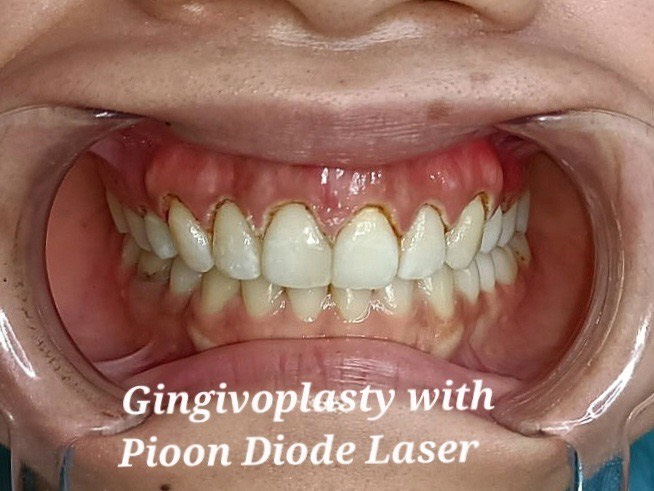Gingivoplasty
Gingivoplasty is a surgical procedure used to reshape gum tissue to give it a more normal appearance and function. It is often used to treat abnormally shaped or overgrown gums due to disease, genetics, or other causes.
Principle
Gingivoplasty is a periodontal surgical procedure aimed at reshaping and improving the appearance and function of the gingiva (gums). This surgery is typically used to treat gum abnormalities or excessive growth due to disease, genetics, or other factors.
Procedure
-
Examination and Diagnosis:
The dentist will conduct a comprehensive examination of the patient's oral cavity, take X-rays, and assess the health of the gums and periodontal tissues to determine the necessity and extent of the surgery.
-
Local Anesthesia:
Before the procedure begins, the dentist will administer a local anesthetic to the surgical area to ensure the patient does not feel pain during the operation.
-
Gum Tissue Removal and Reshaping:
Use a laser to remove excess gum tissue.
After removing the excess tissue, the dentist will sculpt and reshape the gums to create a natural contour.
-
Post-Operative Care:
Detailed post-operative care instructions will be provided, including oral hygiene practices and dietary recommendations.
Regular follow-up appointments will be scheduled to ensure proper healing.

Advantages
-
Aesthetic Improvement:
Enhances the appearance of the gums, resulting in a more beautiful and natural smile.
-
Improved Oral Hygiene:
Even gum edges are easier to clean, reducing the risk of food particles and plaque buildup.
-
Functional Restoration:
Restores the normal shape and function of the gums, helping to protect the tooth roots and alveolar bone.
-
Prevention of Periodontal Disease:
By removing diseased tissue, the risk of periodontal disease and other gum problems is reduced.



